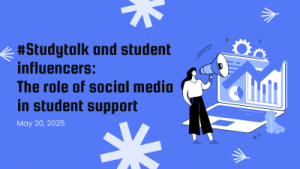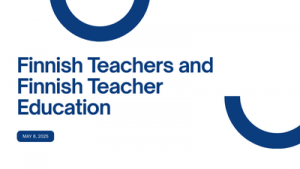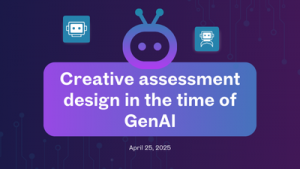Author: Dr. Cheng Yong Tan, Associate Professor, The University of Hong Kong
In today’s ultra-competitive world, children deserve the right to quality education so that they can participate meaningfully in society and be equipped for work. The conventional wisdom of children being entitled to quality education dates back to 14 December 1960 with the introduction of UNESCO Convention against Discrimination in Education.
49 States signified their commitment to pursuing this educational ideal when they ratified the Convention in 1960-1969 and the momentum of this realization has only grown in the last 60 years. By 2020, a full 106 States ratified the Convention.
The Convention affirms that every child has a fundamental right to education. It requires States to provide free and compulsory education, prohibit any form of discrimination, and promote equality of educational opportunity. Since inception, the Convention has raised global awareness against discrimination that is based on, for example, race, religion, politics, social origin, that nullifies or impairs the equality of treatment in education.
However, the educational context has dramatically changed in the last two decades as technological advancements propel the world from the Third to Fourth Industrial Revolution where information and communication technologies integrate all other infrastructures into smart systems.
Expectedly, education has been transformed in tandem with the Fourth Industrial Revolution. The impact of technology on education is most evident after COVID-19 when schools have switched to online or a hybrid form of teaching (“The New Normal”) in lieu of face-to-face lessons.
Unfortunately, not all students are able to meaningfully participate in this learning modality in the New Normal. Therefore, digital divides in learning (i.e., different learning experiences and outcomes arising from students’ access to and use of digital technology) represent a new threat to children’s fundamental right to education.
In Hong Kong, this phenomenon is stark during the prolonged COVID-19 school closure. With more than half a million students enrolled in public primary and secondary schools alone in Hong Kong, we can be forgiven for fixing our gaze on how the digital divides affect learning of school-going children.
Indeed, a large-scale study of 6,300 primary and secondary students, 1,300 parents, 550 school leaders, and 790 teachers’ experiences of online teaching-and-learning during the school closure in Hong Kong by The University of Hong Kong provides compelling evidence for the impact of digital divides on student learning during the pandemic. The eCitizen Education 360 study unravels this impact at two levels.
At the family level, the study finds that we have up to 5% of students without access to large screen devices and up to 19% of students with inadequate Internet access for learning at home during the pandemic. Parents from lower socioeconomic status (SES) families perceive that their children acquire less digital skills during the school suspension, are more worried about their inability to provide adequate digital learning support (large-screen devices and Internet access) to their children, are less likely to be involved in home-based online learning of their children and have lower levels of expectations for their children’s upcoming examination results. (Law, Tan, Lan, & Pan, 2020a, 2021b).
The study also finds that school leaders and teachers are worried that students from lower-SES families are less able to benefit from online learning and thus may not be able to catch up with their learning after classes resume. (Law, Tan, Lan, & Pan, 2020b, 2021a).
In addition to digital divides occurring at the family level, students may also have different learning experiences depending on how digitally prepared schools are during the online learning induced by the pandemic. Results show that students and teachers from schools that are less digitally prepared before the school suspension report less effective online teaching and-learning practices. (Law, Tan, Lan, & Pan, 2020a, b).
These results highlight the need to adopt a multi-prong strategy to mitigate the threat of digital divides to children’s right to education in Hong Kong. First, schools and community organizations need to provide technology access and other forms of support to needy students from lower-SES families. Second, schools need to develop a comprehensive plan that incorporates adaptive hybrid teaching-and-learning strategies.
In conclusion, in the spirit of the Convention against Discrimination in Education conceived 60 years ago, we are now confronted with a new threat – digital divides in education – that has prominently reared its ugly head during the COVID-19 school suspension in Hong Kong. Therefore, we have a responsibility to ensure that all students have access to digital technology and that all schools develop a comprehensive school-wide e-learning strategy so that we can protect the fundamental right of our children to education.
References
Law, N., Tan, C. Y., Lan, M., & Pan, Q. (2020a). eCitizen Education 360 Project – Bulletin 1: From outcomes and challenges of online learning to enhanced digital preparedness for the NEW NORMAL. Hong Kong: Faculty of Education, The University of Hong Kong. https://360-cms.ecitizen.hk/uploads/bulletin01_v9_en_0868d8d54b.pdf
Law, N., Tan, C. Y., Lan, M., & Pan, Q. (2020b). eCitizen Education 360 Project – Bulletin 3: Online-learning preparedness for teachers. Hong Kong: Faculty of Education, The University of Hong Kong. https://360-cms.ecitizen.hk/uploads/bulletin03_en_27a076364b.pdf
Law, N., Tan, C. Y., Lan, M., & Pan, Q. (2021a). eCitizen Education 360 Project – Bulletin 4: Multi-level School Leadership for online learning preparedness. Hong Kong: Faculty of Education, The University of Hong Kong. https://360-cms.ecitizen.hk/uploads/bulletin04_en_ac768f3e5b.pdf
Law, N., Tan, C. Y., Lan, M., & Pan, Q. (2021b). eCitizen Education 360 Project – Bulletin 5: Parent-Child Communication and Relationship are Key to Students’ Wellbeing at Home and in School. Hong Kong: Faculty of Education, The University of Hong Kong. https://360-cms.ecitizen.hk/uploads/bulletin05_en_a1e4363001.pdf



